If you’re craving a unique and delicious dessert, look no further than mochi donuts. Blending the chewy texture of Japanese mochi with the classic appeal of traditional donuts, these treats have taken social media by storm. Mochi donuts are a delightful fusion of American-style donuts and Japanese mochi, offering fluffy, moist dough with a satisfying chew.
Originating in Hawaii, mochi donuts, also known as poi mochi, have gained popularity far and wide. They often feature vibrant colors and a variety of flavors, making them not only tasty but also Instagram-worthy.
In places like Honolulu's Liliha Bakery, you can find poi mochi donuts made from taro root, served alongside other local favorites like coco puffs and malasadas.
Ready to try making them at home? Some recipes suggest piping the donut dough with a size 808 piping tip or frying it in hot oil for a crispy exterior and chewy interior. Whether from a bakery or your own kitchen, mochi donuts promise a delightful twist on a beloved dessert.

Jump to:
🧐 Historical Origins and Cultural Significance
Beginnings in Japan
Mochi has been integral to Japanese cuisine for thousands of years. Originating during the Jomon period, it became a popular treat during the Nara and Heian periods. Made from glutinous rice pounded into a chewy texture, mochi is often associated with festivals and special occasions in Japan.
Mister Donut in Japan played a significant role in popularizing mochi donuts. Their Pon de Ring donuts, inspired by traditional mochi, feature a unique, chewy texture that quickly became a hit. These donuts are shaped like a ring of connected balls, providing both a visual and textural appeal.
Mochi has maintained its special place in Japanese culture, often seen during New Year celebrations and other important events. The fusion of mochi with donuts represents a modern twist on a traditional favorite, creating a dessert appreciated by both young and old.
Popularity in Hawaii and the United States
Hawaii was a key location for mochi donuts' introduction to the United States. In 1992, Charmaine Ocasek developed "poi mochi" in Hawaii, combining taro and mochiko (sweet rice flour) into deep-fried mochi balls. This creation marked one of America's earliest versions of the mochi donut.
The blend of Japanese and American culinary traditions in Hawaii helped mochi donuts gain traction. With Hawaii's rich cultural mix, these chewy treats were instantly successful, spreading throughout the mainland United States.
Once mochi donuts hit the U.S. mainland, they quickly gained a following. Their unique texture and fusion of flavors stood out in a crowded dessert market. Today, you can find mochi donuts in various flavors and styles nationwide, delighting dessert lovers everywhere.
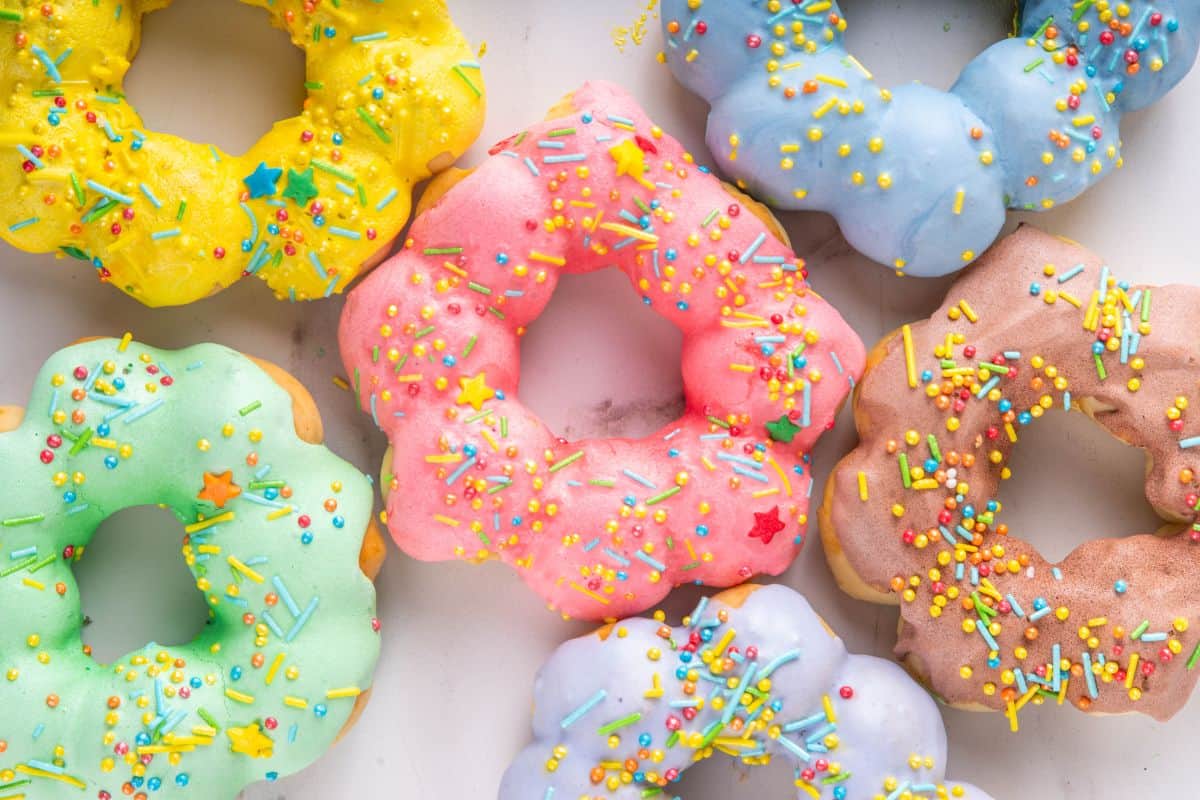
🧐 Characteristics of Mochi Donuts
Texture and Flavor Profile
Mochi donuts boast a blend of textures that sets them apart. Their chewy texture comes from mochiko (sweet rice flour), giving them a distinct bite not found in regular donuts.
The exterior is usually crispy, often lightly fried or baked, adding a slight crunch with each bite. Inside, the donut remains soft and stretchy, similar to traditional mochi, but a bit fluffier. This combination creates a unique eating experience, making mochi donuts a popular choice.
For flavor, mochi donuts are slightly sweet and can be paired with various glazes. Common flavors include matcha, chocolate, and fruity options like strawberry or mango. Combining the chewy texture and the different flavors offers something special in every bite.
Visual Appearance and Presentation
Visually, mochi donuts are just as impressive. They often come in a Pon de Ring shape, created by connecting small balls of dough into a circle. This makes them look like a string of pearls or a small flower.
They can be decorated with a wide array of toppings and glazes. From powdered sugar and matcha powder to richly flavored chocolate or fruity glazes, the decorative options are diverse. This variety ensures that mochi donuts are not just tasty but also a visual treat.
In many bakeries, presentation plays a key role. Mochi donuts are often displayed in vibrant assortments, catching the eye of anyone passing by. Their unique shape and colorful toppings make them Instagram-worthy and perfect for sharing on social media.
Places like Third Culture Bakery emphasize presentation, baking instead of frying to achieve that perfect visual appeal and making their mochi donuts gluten-free, adding to their charm.
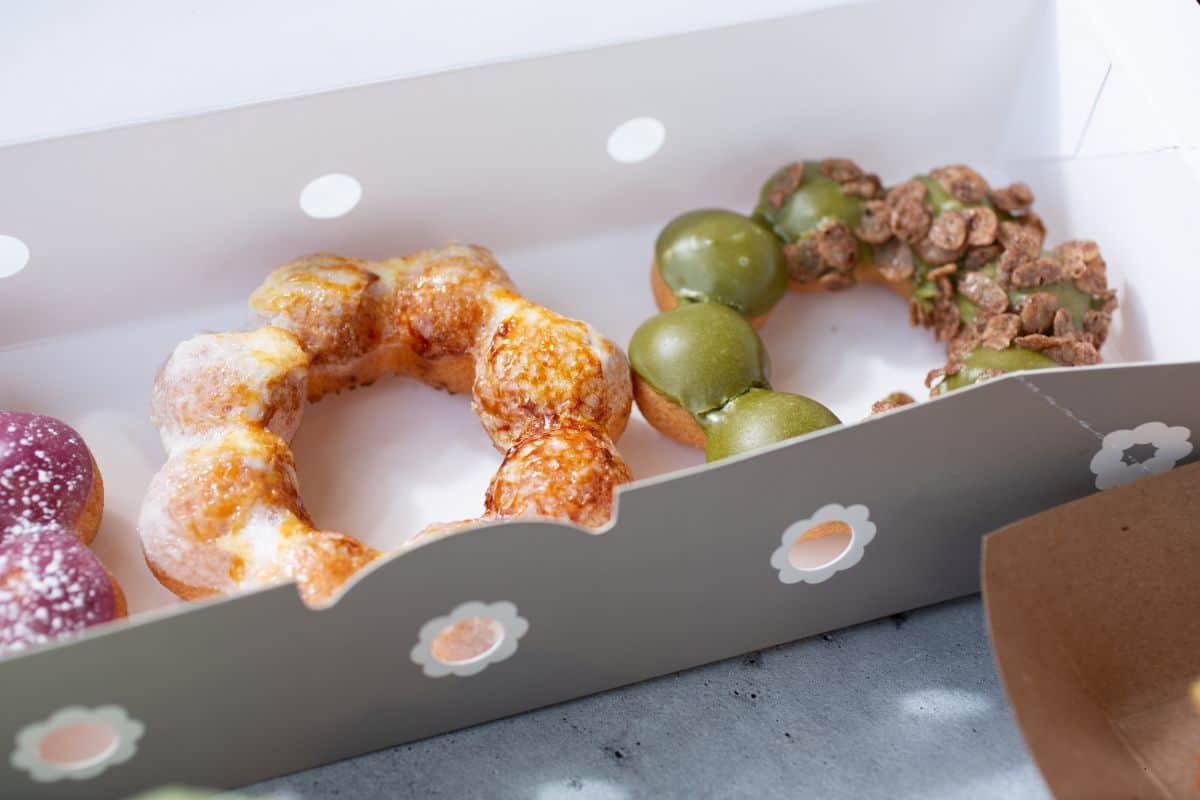
😋 Types and Variations
Classic Flavors and Toppings
Classic mochi donuts often feature simple yet delicious flavors. Matcha is popular, providing a rich, earthy taste. Strawberry glaze adds sweet, fruity notes.
These donuts typically have a chewy texture from sweet rice flour. Traditional toppings include powdered sugar, which balances the flavors nicely.
Pon de Ring donuts, known for their distinct shape, are a common type. They’re usually light and airy, often dusted with powdered sugar or drizzled with chocolate.
Innovative and Regional Varieties
Some varieties showcase unique ingredients. Ube, a purple yam, offers a vibrant color and subtle sweetness. For those seeking a hint of nuttiness, black sesame mochi donuts are ideal. They have a deep, roasted flavor that stands out.
In different regions, local flavors come into play. For instance, Fill Bakeshop might serve seasonal options like pumpkin spice in the fall. Innovative recipes may also include fillings or unique shapes, adding to the appeal. Such creativity keeps fans excited and coming back for more.
👨🍳 Making Mochi Donuts at Home
Ingredients
Mochi donuts require some specific items. Typically, you'll need:
Glutinous Rice Flour: also known as Mochiko flour or all-purpose flour.
Granulated Sugar: This is for sweetness and possibly powdered sugar as a topping.
Whole Milk: This ingredient creates a creamy texture in the donut and acts as a binding agent.
Butter: Real butter is highly recommended when making these donuts, adding a rich flavor.
Large Egg: This will also help bind the ingredients together.
Baking Powder: To help the dough rise.
Substitutions
- Dairy-Free: Substitute milk with a plant-based option like almond milk.
- Gluten-Free: For a gluten-free version, use only glutinous rice flour and omit all-purpose flour.
Equipment and Technique
Proper equipment makes the process smoother. A mixing bowl, a wooden spoon, and a piping bag with a large tip are essential. Use parchment paper to line your baking sheet or frying area.
Start by mixing dry ingredients in one bowl and wet ingredients in another. Combine them and knead until a smooth dough forms. Using a piping bag, create circles of dough on parchment paper.
For a clean cut, a butter knife or paring knife comes in handy. Remember to flour your work surface generously with extra glutinous rice flour to prevent sticking.
Baking and Frying Methods
You can choose between baking and frying methods depending on your preference.
To bake, preheat the oven to 350°F (175°C). Arrange your donut circles on a parchment-lined baking sheet. Bake for 15-20 minutes until they’re golden brown.
For frying, heat about 2 inches of vegetable oil in a pan or pot to 350°F (175°C). Fry the donuts until they're crispy and golden brown, usually 2-3 minutes per side. Place on paper towels to soak up excess oil.
Once your donuts are done, dip them in strawberry glaze, matcha powder, or melted white chocolate for extra flavor. You can also sprinkle with powdered sugar for a classic touch. Enjoy these chewy, delicious treats with a cup of coffee or as a sweet snack!
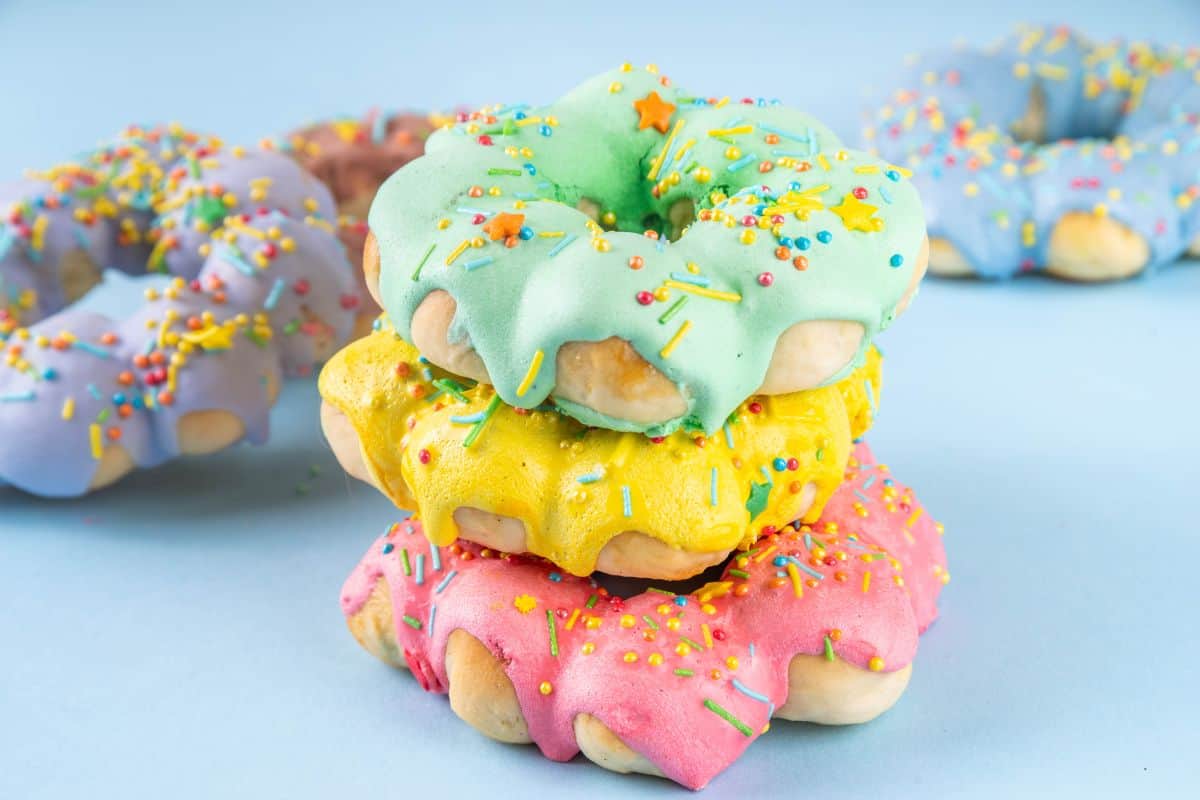
🍴 Nutritional Information and Dietary Considerations
Calorie Count and Macronutrients
Mochi donuts generally contain more calories than regular donuts. A typical mochi donut has about 300 calories. This includes 10 grams of fat, 47 grams of carbs, and 4 grams of protein.
The fat content mostly comes from vegetable oil used in frying. Each serving can account for about 10% of your daily fat intake.
The donut's high carb content is due to rice flour, which is the main ingredient. Those watching their sugar intake should note that these donuts can be quite sugary.
Macronutrient breakdown:
- Calories: ~300
- Fat: 10g
- Carbs: 47g
- Protein: 4g
🫙 Storage and Freshness
Best Practices for Freshness
Mochi donuts are best enjoyed fresh. If you plan to eat them within 1-3 days, storing them at room temperature is ideal. Place the donuts in an airtight container to prevent them from drying out.
For donuts with glaze, let them set and dry at room temperature for about 1-2 hours before storing. This helps prevent the glaze from sticking and making a mess.
If you live in a humid area, consider using a container with a moisture absorber to keep the donuts fresh longer. Avoid placing them in direct sunlight or near heat sources.
Freezing and Reheating Tips
If you can't eat all the donuts within a few days, freezing is a good option. To freeze mochi donuts, place them on a baking tray in a single layer and freeze for 2-3 hours.
After the donuts are partially frozen, transfer them to a larger freezer-proof bag or airtight container. They can stay fresh in the freezer for up to two weeks.
When you're ready to eat them, reheat the donuts in the microwave for 15-20 seconds. This will help restore their texture and make them soft again. You can also reheat them in an oven at low heat for about 5-10 minutes. Avoid overheating, as this can make the donuts tough.
🌎 The Global Impact of Mochi Donuts
Rise in Popularity Through Social Media
Social media platforms like Instagram and TikTok have played a huge role in popularizing mochi donuts. Their distinct, colorful look and unique texture make them visually appealing, which encourages users to share photos and videos.
Influencers and food bloggers often showcase these treats, boosting their visibility. Posts featuring mochi donuts from places like Modo Hawaii and Liliha Bakery draw the attention of curious food enthusiasts.
The hashtags and user-generated content have created a viral trend, making mochi donuts a staple in the online food community. As a result, more people around the world are eager to try this trendy dessert.
Influence on Modern Cafes and Bakeries
Mochi donuts have significantly influenced the offerings at modern cafes and bakeries. Establishments in cities like Las Vegas and beyond are adding these treats to their menus to attract customers.
Some shops have gained popularity by offering unique flavors and innovative presentations. This trend extends to bakeries across the United States and internationally, where chefs experiment with flavors and styles.
The adoption of mochi donuts into cafes and bakeries shows their impact on culinary culture. They blend Japanese and American dessert traditions and cater to diverse customer preferences, reflecting a global fusion cuisine trend.
❓ Frequently Asked Questions
To make mochi donuts, combine glutinous rice flour, sugar, and milk to form a sticky dough. Fry the dough until golden brown. Detailed recipes often include mixing the ingredients, forming the dough, and frying small donut shapes.
Mochi donuts originated in Japan, with one of the popular versions being the Pon de Ring from Mister Donut. They combine traditional Japanese ingredients with a modern twist, creating a unique dessert.
Yes, you can use tapioca flour to make mochi donuts. Tapioca gives the donuts a similar chewy texture to glutinous rice flour. Some recipes may call for tapioca as a substitute to achieve the same chewy quality.
The main ingredients usually include glutinous rice flour, sugar, baking powder, milk, and eggs. Some variations might add flavors or additional ingredients like taro root, as seen at Liliha Bakery.
Mochi donuts might be slightly healthier than traditional donuts. They often contain less sugar and oil. However, they’re still a sweet treat and should be eaten in moderation.
Mochi donuts are different from regular donuts mainly because of their texture. They’re chewy on the inside and crispy on the outside, a feature that comes from using glutinous rice flour. This unique texture sets them apart from classic, cakey donuts.

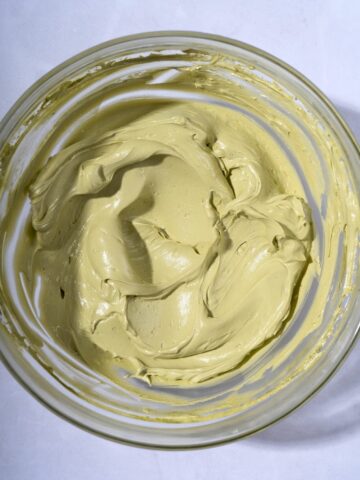
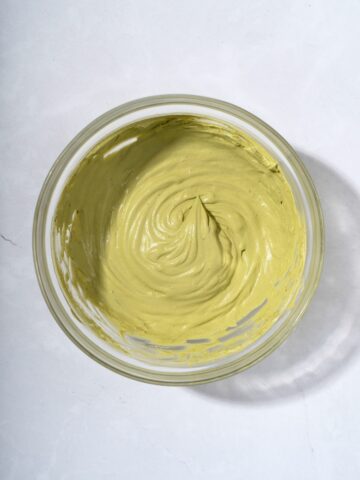
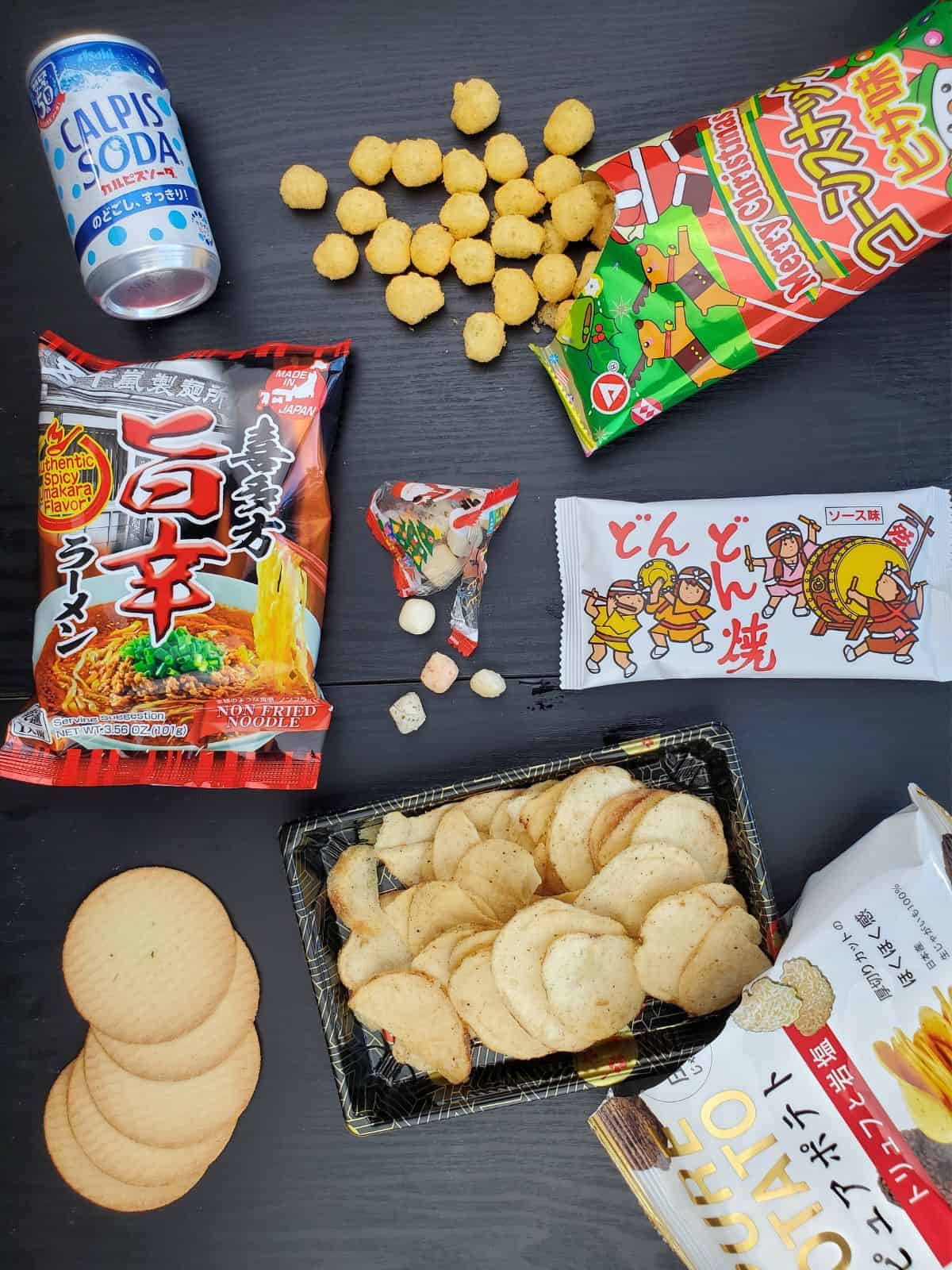
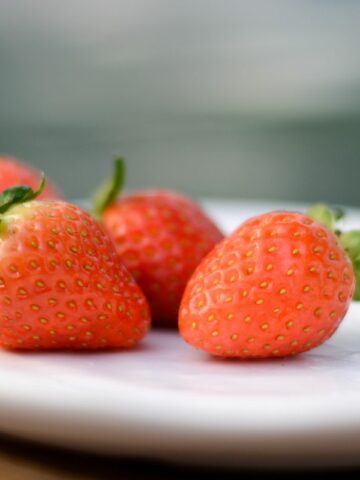
Comments
No Comments